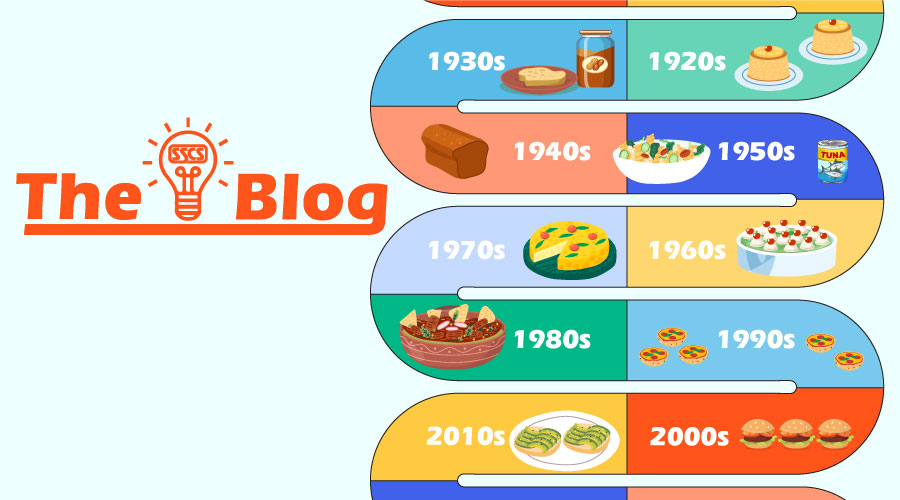
The Changing Face of Food Retailing
When eating out became eating out…and other food culture facts from U.S. history.
The history of America’s food culture is full of little facts that we take for granted. For example, did you ever watch a movie—say, like Gangs of New York—and wonder where you went to catch a meal in 1840’s Manhattan? Or what you would eat there when you did?
While the great majority of people bought fresh food and brought it home to cook—maybe they even farmed it themselves—the concept of eating out did exist at the time. New Yorkers took outside meals at public houses (bars), inns, and food stalls[1].
The concept of “restaurant”—a building dedicated to cooking and serving food, with a communal space where diners eat with other diners—was a little slower to come along. One of the first and most influential was Delmonico’s, born in 1827. They were the first to call themselves, “restaurant,” the first to offer a cookbook, and a pioneer in “farm-to-table”: their company-owned farm cultivated vegetables that were largely unknown to Americans at the time, such as endive, sorrel, eggplant, asparagus, Lupini beans, tomato and artichoke.
Delmonico’s inspired many imitators, which slowly brought the concept of “eating out” into the American lexicon and made it a favorite pastime. So, what would you eat at a 19th century restaurant?
Some of it would be familiar: roast chicken, roast beef, fish, veal, and sandwiches. Some not so much, like squab (a.k.a pigeon meat), rumored to be “light and buttery” and certainly more palatable to contemporary tastes than the restaurant’s calf’s head, calf’s tongue, plover, or reed birds. Several restaurant delicacies were invented at the time, such as Lobster Newburg and Baked Alaska, but after long runs on mid-20th Century menus, these have likewise fallen out of fashion.
From their earliest days, restaurants evolved rapidly, developing into variations on a theme, some very removed from the European fine dining model set by Delmonico’s.[2] Of special interest to our industry is the emergence of other retail food outlets—groceries, general stores, and most recently, convenience stores—and how they incorporated parts (or all) of the restaurant concept into themselves, even extending to some rather upscale efforts.
While it’s difficult to tell how the ongoing development and cross-pollination of places to dine out has influenced what Americans eat, here’s a chronological list of some favorites from the past:
|
Year(s)[3] |
Popular Food |
Year(s) |
Popular Food |
||
|
1856 |
Navy Bean Soup |
1930’s |
Peanut Butter Bread |
||
|
1875 |
Jambalaya |
1940’s |
Meatloaf |
||
|
1883 |
Christmas Pudding |
1950’s |
Tuna Noodle Casserole |
||
|
1894 |
Eggs Benedict |
1960’s |
Jell-O Salad |
||
|
1902 |
Devil’s Food Cake |
1970’s |
Quiche Lorraine |
||
|
1906 |
Onion Rings |
1980’s |
Seven-Layer Dip |
||
|
1919 |
Chocolate Truffles |
1990’s |
Bagel Bites |
||
|
1920’s |
Pineapple Upside-Down Cake |
2000’s |
Sliders |
||
|
2010’s |
Avocado Toast |
||||
No doubt many of the selections listed above would puzzle John (Giovanni) and Peter (Pietro) Delmonico, and there’s no telling what they would make of the new fluid face of American dining. After all, convenience stores wouldn’t exist for another hundred years, and wouldn’t perfect their take on the restaurant until decades after that. Would it be confusing for the brothers to dine on a Delmonico Steak at a convenience store? We’ll never know.
We do think, however, that John and Peter—after taking a look at today’s competitive and varied retail landscape—would probably opt in on technology to help them keep things running straight. And once they started talking to an SSCS Sales Rep, they’d get an even clearer picture of how c-store technology works as an ingredient for success, whether you are selling packaged food, fresh food, or complex recipes assembled from fresh ingredients on site. Food retailing will continue to change, but good management and the right technology will always step up and maximize profits. Give us a call at (800) 972-7277. We can show you exactly how it works.
[1] Food stalls sold oysters to an overwhelming extent at this time, since they were easy to get and, therefore, cheap for most customers. This ended in the 1870’s when water pollution decimated local oyster colonies.
[2] Changes to food consumption also included exciting new influences from immigrating cultures that added their own individuality to the preparation and presentation of food.
[3] For an incredibly detailed timeline of food favorites and recipe inventions over the decades, some of which we’ve excerpted for this table, check out this food timeline researched and compiled by Lynn Olver.






Leave A Comment